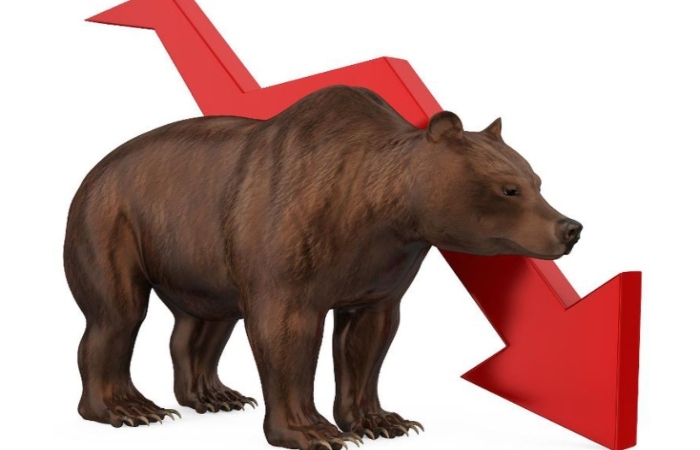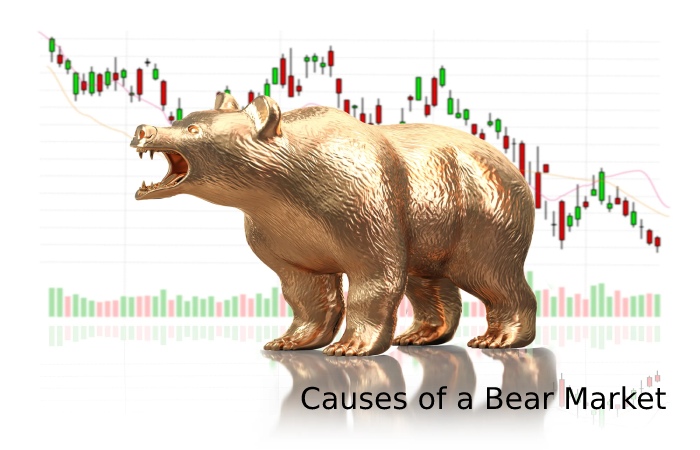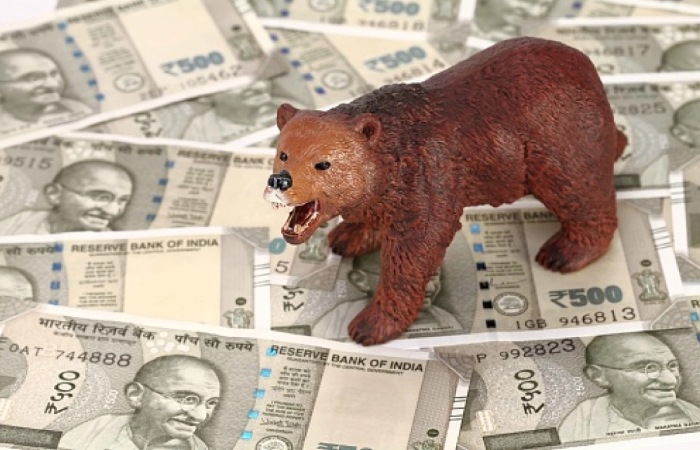 Bear Market Write for us: Cyclical movements in the business cycle cause a recession in an economy characterized by a downtrend in the overall price level. This includes a fall in the regular stock prices resulting from reduced demand, which, in turn, lowers the value of level indices in a country.
Bear Market Write for us: Cyclical movements in the business cycle cause a recession in an economy characterized by a downtrend in the overall price level. This includes a fall in the regular stock prices resulting from reduced demand, which, in turn, lowers the value of level indices in a country.
The first sign of an upcoming slump is a vital value drop in major indices associated with the major stock exchanges of a country. For example, the first warning sign of a recession is a massive fall in the Sensex and Nifty points associated with the Bombay and National Stock Exchange.
Looking back at the event causing a slump in India and its corresponding impact on India’s stock market, major bearish markets should consider developing a clear understanding.
What is a bear market?
A prolonged drop in investment prices defines a bear market — generally, it occurs when a comprehensive market index falls by 20% or more from its most excellent fresh high. The conflict of a bear market is a bull market, pigeonholed by gains of 20% or more.
While 20% is the brink, bear markets often fall much deeper than that over a continuous period. Although a bear market may have irregular “relief rallies,” the general trend is downward. Investors’ doubt and low confidence describe bear markets. During a bear market, savers often ignore good news and sell quickly, pushing prices even lower. Eventually, depositors begin to find stocks attractively priced and start buying, formally ending the bear market. There can be bear markets for a marketplace as a whole, such as in the Dow Jones Manufacturing Regular, as well as for individual stocks. When investors are bearish on a particular store, that sentimentality is doubtful to touch the Market as a whole. But when a marketplace or index turns bearish, almost all frameworks within it fail, even if individually, they report good news and rising earnings.
There can be bear markets for a marketplace as a whole, such as in the Dow Jones Manufacturing Regular, as well as for individual stocks. When investors are bearish on a particular store, that sentimentality is doubtful to touch the Market as a whole. But when a marketplace or index turns bearish, almost all frameworks within it fail, even if individually, they report good news and rising earnings.
How long do Bear Markets previous, and what causes them?
A bear market often happens just before or after the budget moves into a slump, but not always. Savers carefully watch key economic signals hiring, wage growth, rise, and attention rates — to judge when the economy is slowing.
Investors expect corporate profits to decline shortly when they see a shrinking economy. So they sell stocks, forcing the Market lower. A bear market can signal more being without a job and more challenging financial periods ahead.
Bear markets tend to be quicker than bull markets — 363 days on regular — versus 1,742 days for bull markets. They also tend to be less statistically straightforward, with typical losses of 33% compared with bull market steady gains of 159%, according to data compiled by Invesco.
Causes of a Bear Market

Unexpected variations
Fluctuations can arise due to socio-economic disorder in a republic as well. As political choices impact the performance of prominent businesses operating in an economy, investments are likely also to take a hit.
Global mindset
With rising interdependence among the nations in the world, any fluctuation in the act of a sizable major economy is bound to have repercussions in a domestic economy. A recent example can be named in this deference when tensions between America and China, two of the biggest thrifts in the world, caused doubt among Indian investors as well, leading to a fall in the Sensex points.
As relations between the two global giants are likely to influence the Indian cheap through fluctuating import and export revenues, the profitability of domestic industries is expected to vary accordingly.
World recession
A pessimistic global mindset can trigger a worldwide recession, creating a bear market in all major stock markets operating in the world. As companies tend to fail due to reduced market demand for their products, their share prices also tumble on stock exchanges.
Such stock market variations affect both large, mid, and small-cap businesses, wherein a more significant effect is observed in the small and mid-cap trades, owing to their high degree of volatility.
Types of a Bear Market

Secular – A secular bear market trend represents long-term economic conditions in the stock market due to domestic policies. Temporal trends leading to a bearish outlook can have long-lasting financial effects, often discouraging investors from partaking in big investment projects.
High interest on bonds, treasury bills, and other zero-risk instruments encourage individuals to invest in these tools, thereby reducing the total notional demand for stock market instruments and generating a bearish stance in the stock market. A secular market was observed from 1983 to 2002 when the United States of America saw the do-com effervesce.
Cyclical – Cyclical bear stocks rise due to business cycle variations in an economy, which usually occur every 7-10 years. Markets often adjust after a prolonged boom, characterized by extensive growth rates demonstrated by all significant sectors of the economy.
A cyclical downtrend in stock prices expects in a country wherein falling stock prices adjust mechanically in a couple of months to recover a positive outlook regarding savings in the routine Market.
An example of a bearish market leaning was the global fiscal go-slow of 2008-09, triggered by the subprime loan crisis caused due to the overinflated housing asset bubble in America.
Consequences of a Bear Market
A bearish trend depicts a slowdown of an economy, with rising investor doubt and falling movements. As the total amount of investments assumed falls significantly in such events, owing to a downturn in aggregate demand, businesses often face a monetary crunch, reducing their total output. Therefore, a country often faces high being without job problems and a downtrend in the overall price level, causing deflation. A poor stock market performance is a significant indicator of recession.
How to Invest in a Bear Market?
The primary point to note in this regard is that typical prices don’t remain stable in the Market and alter readily, corresponding to changes in the business cycle. As a result, safeties purchased at reduced costs sell later when the Market recovers from a bearish outlook, helping investors realize substantial capital gains.
Also, the immediate sale of securities leads to extensive losses on the part of investors, while withholding the same can be a money-making venture. In the long run, when the prices adjust to a strong outlook. The profitability of major operating companies increases significantly, which, in turn, ensures significant dividend payouts in the future. Depositors looking to receive a steady episodic cash flow should opt to land their future investments in the primary stock market bear for wealth accumulation.
How to Submit Your Articles
To Write to Us, you can email us at contact@thewhoblog.com
Why Write for The Who Blog – Bear Market Write for Us

Search Related Terms to Bear Market Write for Us
- Bear market
- what is a bear market
- bear market definition
- bull vs bear market
- what is a bear market
- bear market rally
- bull market vs bear market
- bear market vs bull market
- whats a bear market
- what does the bear market mean
- are we in a bear market
- bear market meaning
- what does a bear market mean
- how long does a bear market last
- bear market camdenton mo
- length of an average bear market
- average length bear market
- what’s a bear market
- average bear market length
Guidelines for Article to Writing Bear Market Write for Us
 You can send your mail to contact@thewhoblog.com
You can send your mail to contact@thewhoblog.com
Related Pages

